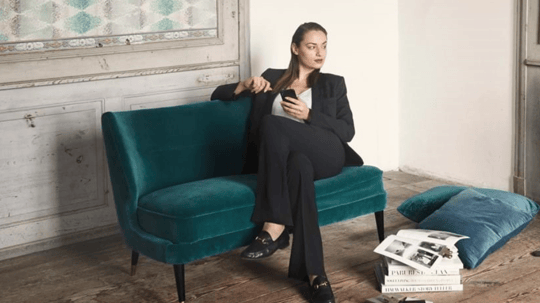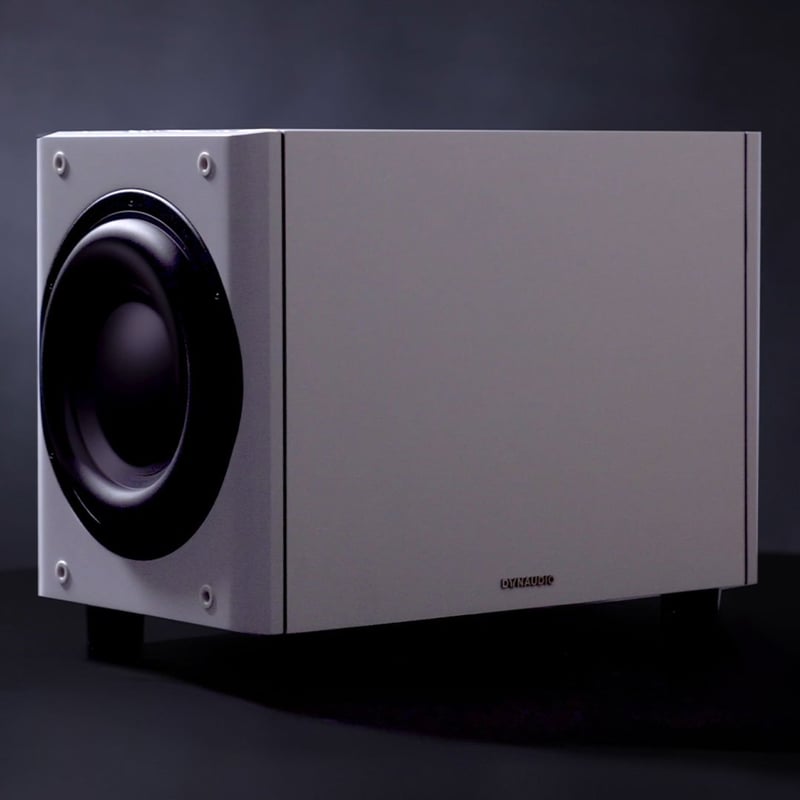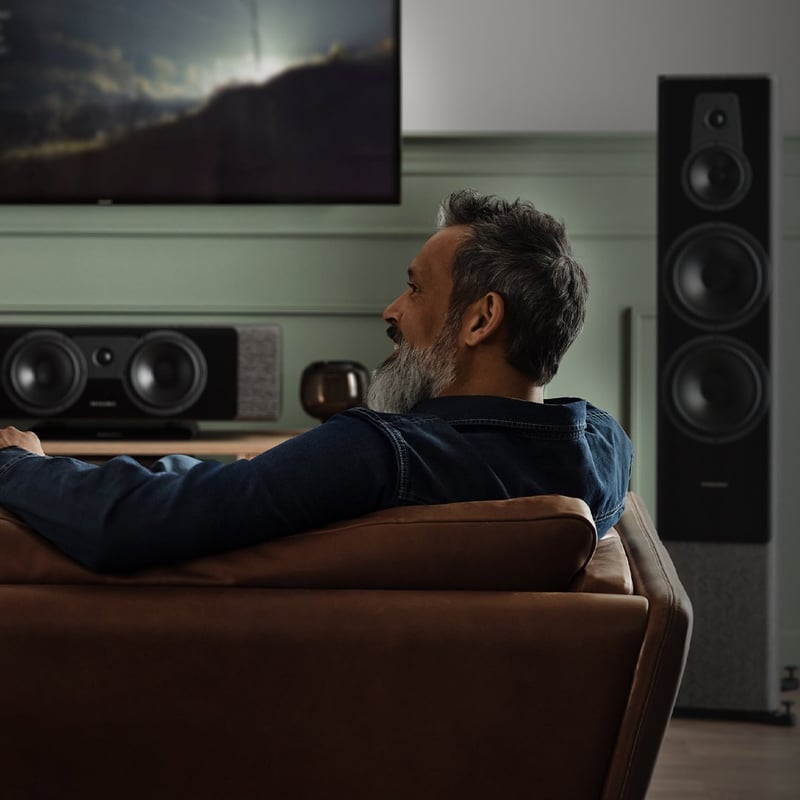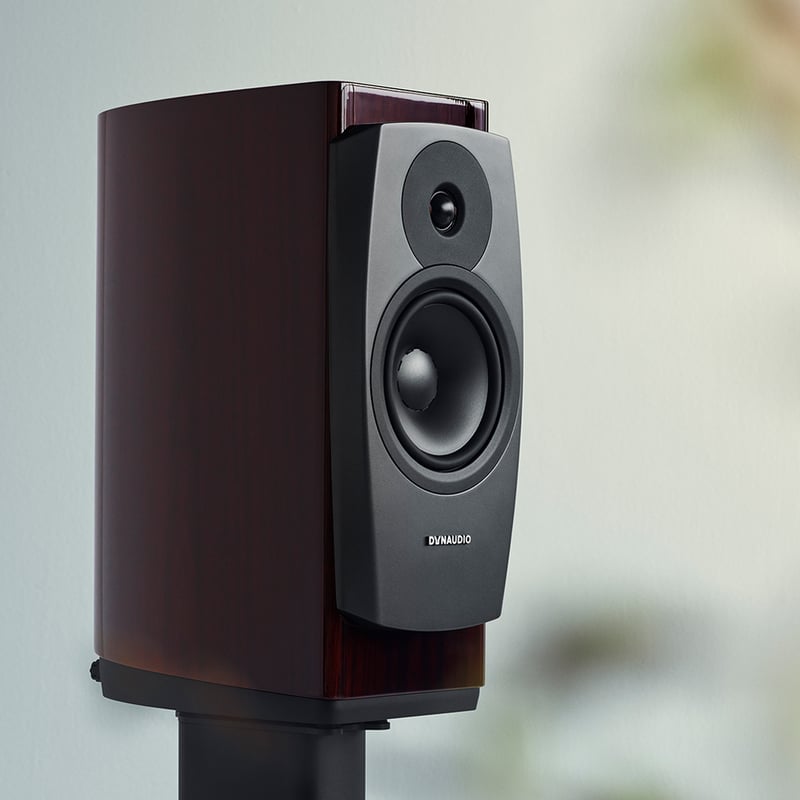In this episode, we answer questions from Udo Holzmann, Trond Roaas, Thomas Eriksen, Arn Klein, Neil Copland, Humbert Sin, Ted Sanborn, and Anders Blichert-Refsgaard covering topics like how to find the optimal distance between the back wall and speaker, reference music for placement and toe-in, how to define 'soundstage', digital room correction, and many other.
This episode's questions
Comments on a Hi-Fi setup
How does my Hi-Fi setup look? The very first question in our Ask The Expert series is about Hi-Fi setups. Here, Otto shares a couple of tips, and his thoughts about Udo's setup.
Reference music for speaker placement and toe-in position
Which music should you use when calibrating your setup; you know reference music for speaker placement and calibration? That's exactly what Trond wants to know, and he even shares a suggestion that Otto likes.
Defining 'soundstage'
Definitions can be a hard thing to nail down. But, when Thomas asked Otto to define 'soundstage' he didn't shy away.
Sound improvement suggestions for speakers close to windows
Sometimes we can't place our speakers in the optimal listening position. Arn has to have his speakers up against a large window. So, his question was simple: "How do I improve my listening experience? Watch Otto's answer.
Keeping the In-laws from your speakers
We all know In-laws can be tricky. But, how do you deal with them moving around you speakers? Otto has no other choice than to agree with a suggestion from one of our other Facebook friends.
What to do when a triangular speaker setup isn't an option
What to do when your left and right speakers don't have the same environment... what to do? Here, Otto suggests a couple of options for dealing with a setup where one speaker is up against the wall and the other one stands free.
Should you use room correction such as Audyssey?
How should you use room correction? It's an opinionated topic, and Otto adds his view to the mix.
What to do about lack of bass in a large room
Sound improvement is this episode's hot potato, but that shouldn't surprise us (or you) as the topic is speaker placement and calibration. It can be tricky to get the right sound experience in large rooms, but Otto has a couple of tricks up his sleeve to make it right.
Thank you!
All that is left to say is: THANK YOU. Thank you for posting all of your interesting questions. We did not have time to answer all of them in the video above, but some have been saved for a later time. Especially the ones about music production topics.
Subscribe: Get the latest Ask The Expert videos from our YouTube playlist
If you have any more questions, please share them with us - and the rest of our community - on our Facebook page or directly in the comment section on YouTube.
All the best,
Otto and Christopher
Next up...
Otto also starred in our Ask the Expert episode about loudspeaker care. Watch it below.
Transcript
Christopher Kjærulff: Welcome, My name is Christopher and I am the community manager here in Dynaudio. I will be your host today where we shoot our ask the expert session, which is with Otto. We will just jump right into the first question, which is from Udo Holzmann. Otto, he has sent us an image on Facebook where we can see his large Hi-fi setup and he asked you to come with some comments to it.
Otto Jørgensen: Yes, basically Udo’s set-up looks fine. There is no reason to think that set-up would not work. He has the speakers placed into the room away from the walls. He has a good distance between the speakers. The distance is basically the same as the distance to the listening position, which is optimum.
Christopher: And how would you determine which is the optimum listening distance.
Otto: Basically you form an equilateral triangle between the speakers and the listening position, so the distance between the speakers is the same as the distance from one speaker to the listening position. That is the theory.
Christopher: And we also saw in the picture that Udo has sent us, and he also mentioned that he has this bookshelf.
Otto: Yes he seems a little bit worried about the distance to the bookcases but in reality it is the distance to the back wall that is important. The bookcases absorb a lot of sound and scatter a lot of sound and that is a good thing, you actually want that. So you shouldn’t be worried about putting the speakers close to the bookcases.
Christopher: Ok. So it is about, you know, getting the distance right. Do not worry about the bookcases.
Otto: Actually, it is the distance from the back wall that is important. So what I would like to do to determine is the proper distance in that room. You cannot have a set distance for this particular speaker. You have to determine it in the actual room. What you can do is, push the speakers back very close to the book cases, which would probably be wrong. And then start moving them out gradually. For each step try to listen to it again. Try to hear the differences, if the sound is improving. So long as it is improving just keep increasing the distance. At some point the distance will be too far and the sound will be worse. You will start hearing a worse soundstage and too little bass.
Christopher: Then it is about time to move it back now.
Otto: Then you go back a little bit until you have the proper distance to the wall.
Christopher: Ok. Another thing that I saw in Udo’s picture was that he has not toed his speakers in. Would you recommend that or…?
Otto: We usually recommend a little bit of toeing but that can be different for each room. So basically the answer is the same. You can…
Christopher: When you have to set it up it is the same answer. Trying…
Otto: Yeah try to work it out how it actually works in your room. Trust your own ears. Try to point the speakers too far out, which would definitely be wrong and then gradually toe them in until you get to a point sound no longer improves. It starts getting worse. And find the right toe-in for that particular room. That is exactly the same procedure and again you just have to listen to the difference.
Christopher: And what are we listening for? Is it the sound stage? Is it too much space? Or?
Otto: Basically focus on the sound stage especially when you are toeing the speakers in. You try to listen to – you want to have a white sound stage. If we go too far in you, start collapsing the sound stage.
Christopher: Ok so that is it? That is it. Thank you for the question Udo. And we move to the next point in a minute. So Otto, our next question is from Trond Roaas. Sorry Trond I hope I am pronouncing that correctly. He asks what kind of reference music you would suggest for speaker placement and toeing in.
Otto: Actually for the placement of the speakers in relation to the back wall and the side wall the more important thing is to get an even bass response. So I would look for tracks that has refined and repetitive bass tracks. That could be – I like Billie Jean from Michael Jackson. Tracy Chapman has lot of records that are usable here. Try to listen for getting the bass even so that no notes actually stand out from the others.
Christopher: Ok, so speaker placement: – Billie Jean or Tracy Chapman.
Otto: Could be
Christopher: And I know that Trond – He actually suggested the track called “Amused to Death.” What are your thoughts about that?
Otto: Yes. That is actually a really good suggestion by Trond. Because I use that track a lot – like album a lot. It has a specialty called Qsound. That is artificial surround from two speakers. So basically, even though you only have two speakers, you will hear the sound all around you if the speakers are set up properly. That is especially useful for toeing in the speakers. When everything is set up properly, you will hear some effects behind you. And they are more defined when you have the proper set up for speakers.
Christopher: Cool. Thank you Trond. So just to sum-up: Billie Jean and Tracy Chapman for speaker placement and –Trond’s Suggestions- “amused to death” is really good for toeing in.
Otto: Yeah
Christopher: Thank you.
Christopher: The next question is from Thomas Eriksen, and he asks how would you define the “soundstage”?
Otto: That is a really good question because getting the soundstage right is a very important part of hi-fi and also very difficult part of it actually. The soundstage relates to - kind of the illusion of sound that emerges around the speakers. It is easy to get a clean sound coming from the speakers but what you actually want is to have this sound emerging around the speakers.
Christopher: So you can actually close your eyes and match where the different musicians are.
Otto: Yes. You want the illusion to have the musicians in front of you. Sometimes you can have depth in your soundstage if you can hear that the drummer is behind the singer for instance. You would define that as a better soundstage.
Christopher: Ok
Otto: Also very often people search for very large soundstage. So they want a really huge sound stage. That is not always a good thing. Because actually sometimes you have a sound where you have this wall of sound that makes the sound appear huge. But then if the song of the singer also spread out all across the wall then you won’t have a very defined sound stage.
Christopher: Ok so you can, again if you close your eyes then you wouldn’t be able to actually position her
Otto: No She would sound like she was ten feet tall and yelling at you instead of having a singer placed in right position having the other parts of the instrument placed different in the soundstage. SO the ability to have this illusion of sound in your living room where you can place its part of the music independently. That would define a good sound stage.
Christopher: Ok. Great. Thomas Eriksen also asked how you would set up a subwoofer in a stereo system.
Otto: Yes. Very often it is that people get the impression that the subwoofers are not really good for stereo setups. And I think much of that is related to the wrong setup. So mostly one of the things I really recommend is instead of using one subwoofer using two subwoofers.
Christopher: Why is that?
Otto: There are several reasons for it but the most important one is actually, people think that you use two subwoofers to get more output to get more bass but that is not actually the case. What we want to do is even out the base. So if you have a subwoofer in one corner the bass would kind of fluctuate in the room so in certain positions in the room you would have more bass and in other positions you have less bass. If you have two subwoofers they would work together and even out the bass where you have peak - from one subwoofer you might have a different from other subwoofer. And the total amount of bass would be more even. So you get actually often less bass total but it is much more even much more defined bass.
Christopher: Ok. Great!
Christopher: So Otto we have three fairly quick questions for now. The first one is from Arn Klein and I Am hoping that I am pronouncing his name correctly. He has a problem as he can only place his speakers up against a large window section. What are your thoughts on that?
Otto: Well that is always a problem because you have the speakers up against a very reflective surface and the sound coming off from that reflective surface will interfere with the sound coming from the speakers. So the only real suggestion is to put a curtain in front of those windows so that the speakers are against a more dent surface. Then the sound of the speakers will sound much more defined.
Christopher: Ok. The next question is from Neil Copland, and this is a fun one. He asked how do I keep my mother-in-law from moving my speakers around when she is cleaning up.
Otto: Well actually I think it was John Roome He came up with the exactly correct suggestion here. Barbed wire.
Christopher: Barbed Wire. Yes folks – Barbed wire. And the last of these three questions is from Humbert Sin. Humbert, again, I am sorry – I hope I am pronouncing these names correctly. He has his speaker setup in a corner which means that one speaker is up against the wall and the other is free from any surfaces and he says that triangular position is not possible.
Otto: Yes. This is a very common problem. What happens is that you have one speaker next to a reflective surface and the other one does not have any surfaces it is just in the middle of the room. So what you really need to do is get some acoustic dampening on that wall next to the speakers. The only good solution to this – so that you damp that reflection, so that you won’t have any reflection from either speaker and they will sound more similar.
Christopher: Ok, Perfect! So quick sum up. So curtains for Arn Klein, barbed wire for Neil Copland and some dampening material for Humbert Sin.
The next question is from Ted Sanborn and he has a system where he turns off Audyssey for an optimum sound and he asks is that actually optimum to turn it off.
Otto: Yes well, it can be. Audyssey is an automatic room correction software that measures the sound coming from the speakers in the room and then tries to correct the sound going into the speakers.
Christopher: Ok
Otto: Sometimes that works sometimes it doesn’t. And what you basically should do is trying to set it up manually. It is free to try and it is not actually not that complicated. And then try to compare what you get instead of trusting the software too much. Try to also trust your ears. Setup the speakers like you would if you didn’t have the correction software and see where it goes.
Christopher: So it is about, you know, just trying. He also mentioned something about full range sound.
Otto: Yes. He says he turns Audyssey off to get full range sound. That is not necessarily combined. You can set the speakers up whichever way you want without the correction software. So you could manually setup the speakers to go full range or you can set them up to have a crossover at, for instance 80 Hz, so that the lower frequencies go to the subwoofer. And the best choice is actually dependent on the system. Very often you will get higher output, higher dynamics by crossing the speakers and sending the lower notes to the subwoofers. In some setups with large speakers you may want to run full range on the speakers. Again trust your ears.
Christopher: Ok. Thank you for the question Ted. Our last question is from Anders Blichert-Refsgaard and he has this large living room with sloping walls. He uses some acoustical plates called Troltekt but he feels like he misses some bass in the system.
Otto: Yes. An attic like that with slope walls - that is a very difficult setting to achieve a good sound. So there is probably not an easy solution to this. The way the sound behaves in a room formed like that can be very unpredictable but main suggestion is to try to work with actually the listening position. Instead of moving the speakers around try to experiment with the listening position. Maybe try to sit closer to the speakers. Maybe actually get the speakers closer together and move closer to them to form this triangle we talked about. But… Moving the position either closer to the speaker or further way – that would change the way the sound is projected in the room. That could change the perception.
Christopher: But I know you also talked about something with the bass actually being absent in the special place…
Otto: Yes especially if you are sitting in the middle of the room you will have a phase out of bass. You will often have a kind of hole exactly in the middle of the room. So you should try to avoid sitting in the exact middle.
Christopher: That is why you should move and experiment
Otto: Yeah the best position is actually a bit more than a third away away from one of the back walls. Either back walls or front walls. 38% if you want to be exact. So measure the distance and find the 38% spot and that is very often the best listening position.
Christopher: There it is.
Christopher: Thank you for the question Anders and thank you Otto for being part of this. This was really good. There were great questions from all of you guys. Thank you for that and thank you for your answers. They were really good I think. If you have any more questions for us find us on Facebook we will do our very best to answer all of them. See you around.
Sign up to get more great articles
Nothing compares to the satisfaction of knowing – for a fact – that something is as good as it gets







